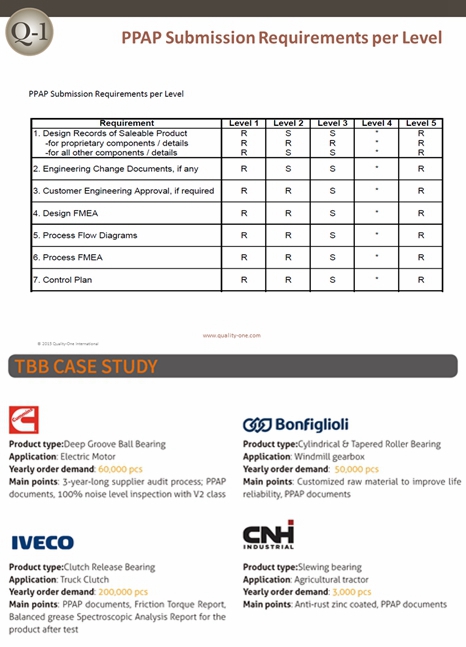Most rolling-element bearings are either ball or roller bearings. The roller bearing family consists basically of cylindrical, tapered, spherical, and needle bearings. Needle roller bearings are the smallest and lightest of the roller bearing family. That gives them specific advantages for certain applications, particularly those requiring reduced weight and space. The high roller length-to-diameter ratio helped give the bearings their name as well as their operating characteristics. Essentially, needle roller bearings have: • Higher load capacity than single-row ball or roller bearings of comparable OD.• The ability to handle a larger, more rigid shaft in a given application.• Excellent rolling characteristics within a small cross section.• Generally lower cost, especially for the drawn-cup type compared with machined versions. Needle rollers The most economical type of needle roller bearing is a full-complement of loose needle rollers assembled directly between a hardened and ground shaft and housing. Generally, hardened end washers provide axial location. This type appears in many applications such as those where a hardened and ground gear bore serves as the outer raceway. When application requirements are met and assembly is not difficult, a full complement of rollers forms a bearing of small cross section and high load capacity. It…
●What is PPAP? PPAP is the abbreviation of Production Part Approval Process, a valuable tool for establishing confidence in component suppliers and their production processes. Initially, PPAP was utilized by the automotive and aerospace industries. PPAP is now being utilized by several industries to improve communication and provide quality products. Within the automotive industry, the ultimate resource for PPAP information is the manual published by the Automotive Industry Action Group (AIAG). PPAP defines the approval process for new or revised parts, or parts produced from new or significantly revised production methods.?It verifies that the supplier understands all customer engineering design specifications and requirements and that the process is capable of consistently producing product meeting those requirements during an actual production run at the quoted production rate. ●How to perform PPAP? The PPAP process consists of 18 elements that may be required for approval of production level parts. Not all of the elements are required for every submission. There are five generally accepted PPAP submission levels. A, 18 elements of PPAP: 1. Design RecordsA copy of the drawing. If the customer is responsible for designing, this is a copy of customer drawing that is sent together with the Purchase Order (PO)….
Much like a heart in a human body, the compressor circulates the system’s lifeblood, in this case the refrigerant, that is vital to the proper operation of the air conditioning (A/C) system.The world-leaders of car air-conditioning compressors, such as Toyota Motor Corporation, Daimler AG, General Motors Company (GM), Volkswagen AG and Hyundai Motor Company. Car Air-Conditioning Mechanisms Liquid (refrigerant) is cycled throughout a sealed air conditioning system in a repeated process of vaporization (evaporation), liquefaction, and re-vaporization. It is necessary for a gas to give off heat to liquefy (condense). If the refrigerant gas is pressurized, and the pressure is increased, it becomes comparatively easier to liquefy. TYPES OF COMPRESSOR 1, Swash Plate Type (Fixed Displacement) This piston is constructed from the components shown in the illustration.The pistons move back and forth when power from the engine causes the shaft and swash plate to rotate. One piston is comprised of cylinders on both sides. The ends of the piston intake pressurize and discharge refrigerant. 2, Vane Type (Fixed Displacement) This compressor is constructed from cylinders and five vanes built into the rotors, as well as two discharge valves and front and back side plates.The five vanes rotate in tandem with the rotors…


